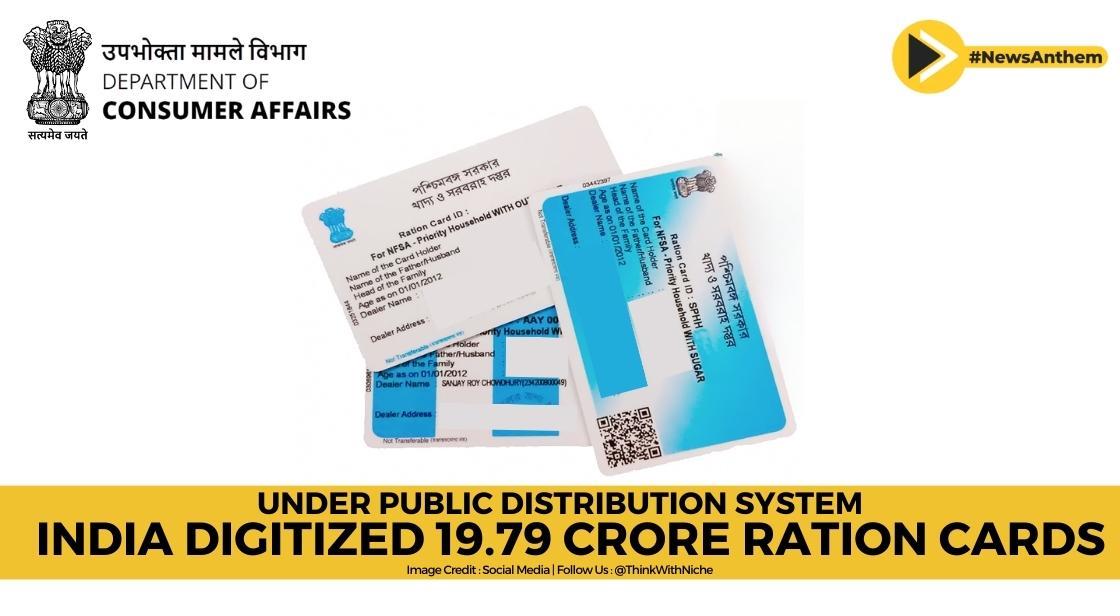Under Public Distribution System India Digitized 19.79 Crore Ration Cards

News Synopsis
According to Sadhvi Niranjan Jyoti, Union Minister of State for Ministry of Consumer Affairs, Food and Public Distribution, approximately 19.79 crore ration cards issued under the National Food Security Act (NFSA) have been digitized as part of the Public Distribution System reforms, and all states and union territories have developed their transparency portal.
Following PDS reforms, virtually 100% automation of fair price shops (FPSs) was also achieved by installing electronic point of sale (ePoS) devices at FPSs for biometric verification of beneficiaries and electronic capture of transaction data, ensuring proper targeting of NFSA beneficiaries.
The minister further stated that around 95% of total allotted foodgrains in the country are given using these ePoS devices following biometric or Aadhaar validation of recipients.
The government has approved the phased distribution of fortified rice through the targeted public distribution system (TPDS) under the NFSA and other welfare schemes (OWS) to states and union territories (UTs) by 2024. By March 2023, phase I will have covered ICDS and PM-POSHAN in India, while phase II will have covered TPDS and OWS in all aspirational and 291 high-load districts on stunting. Phase III seeks to cover the remaining TPDS and OWS by March of next year.
TPDS is now being used by 27 states and UTs to distribute fortified rice. As of March 5, roughly 9.6 million tonnes (MT) of fortified rice have been delivered via TPDS under phase II.
The Indian Public Distribution System (PDS) is responsible for supplying basic needs to families living below the poverty line. The Public Distribution System in India is the world's most comprehensive food delivery system. PDS is classified as Food and Public Distribution. The Indian Government's Public Distribution System is managed by the Ministry of Consumer Affairs.
PDS was replaced in June 1997 by the Targeted Public Distribution System, which managed food distribution and grain distribution. The TPDS places a heavy emphasis on identifying and implementing the poor in order to ensure sufficient planning and delivery of food grains. As a result, the Government of India launched the TPDS.
PDS was originally used as a rationing strategy during World War II. Before the 1960s, food grain imports were usually required for PDS distribution.
The Indian government established the FCI and the Agricultural Price Commission to increase domestic earnings and accommodate food grains. It was done in response to the 1960s food scarcity.
You May Like









